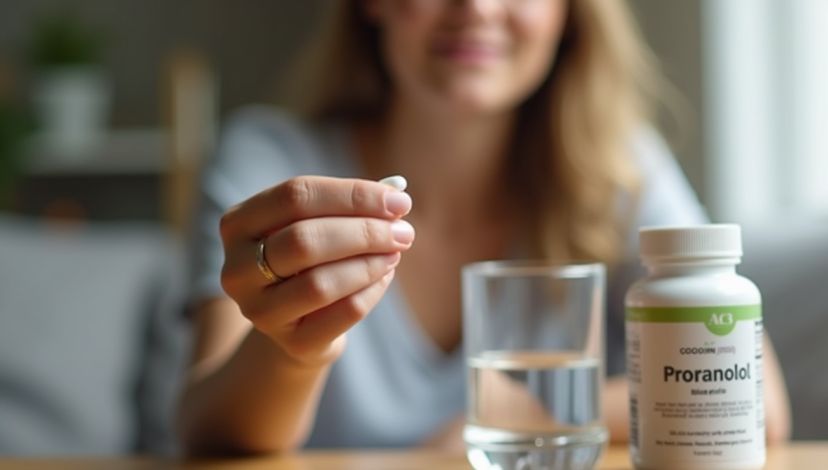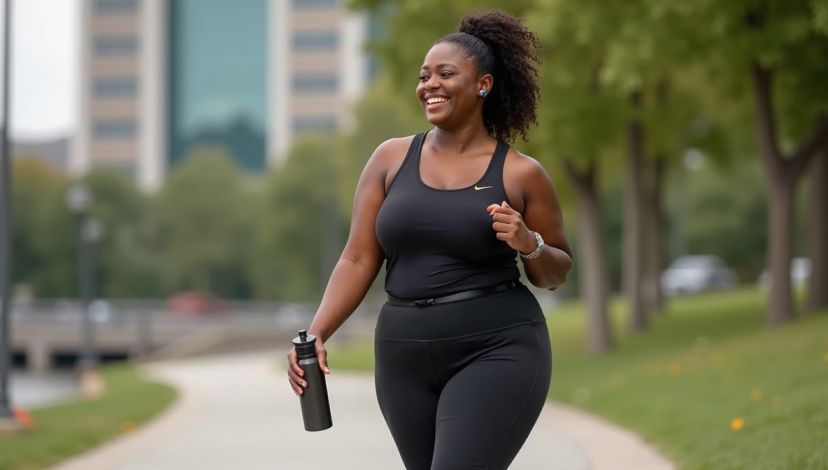Anxiety is a common illness and many people are afflicted by it worldwide. Its physical manifestations, including rapid pulse, profuse sweating, and shakiness, are downright terrible. Although some of the prescribed medication comes in the form of therapies and antidepressants, most people are so turning to other drugs to combat Bipolar disorder. Propranolol is one of them; it is a beta-blocker, first used in heart diseases. Much like other modern medications used in weight-related conditions, propranolol is now being widely used off-label to help manage anxiety—particularly social anxiety and performance-related stress. It demonstrates great potential in addressing somatic (physical) aspects of anxiety, and not only the emotional or cognitive parts of it.
Understanding propranolol for anxiety is important because it offers a different approach, targeting the body’s physical response to anxiety rather than the emotional or cognitive aspects. It can be useful, especially to those individuals who involve severe physical symptoms when faced with stressful scenarios like when giving a public speech or by making social gatherings.
Key Takeaways:
- Propranolol alleviates the physical manifestations of anxiety, such as difficulty in breathing, tremor, and increased rate of heartbeat.
- It is commonly off-labeled as social anxiety and performance anxiety.
- Propranolol is effective, but there is a possibility of side effects, and it is taken under medical control.
What Is Propranolol? How to Use Propranolol to Treat Anxiety?
Propranolol is a type of drug known as a Beta-blocker drug whose major application is in the treatment of heart-related conditions like high pressure, abnormal beats in the heart, and chest pains. But the way it prevents the effects of adrenaline, the hormone that causes the so-called fight or flight effect, this advantageous situation enables it to treat anxiety-related physical disorders.
When one is anxious, adrenaline produces an accelerated pulse, tensed muscles, and making sweat. Propranolol has an effect of suppressing adrenaline receptors, which consequently slows the heartbeat and prevents trembling, sweating, and other physical manifestations of anxiety. This relaxational effect in the body may help one cope with anxiety-prone situations.
An example of one of these conditions can be a social anxiety who is in the grip of large tremors and sweating when about to speak publicly. These symptoms can be regulated by taking propranolol one hour before the event, after which they will be able to perform more confidently.
Note: Propranolol does not treat the true cause of anxiety, emotionally or psychologically, but only the physical effects of the anxiety.
Propranolol vs. A Table of Comparison of Other Anxiety Medications
Being familiar with how propranolol rates to other common medicines used in treating anxiety can give you a better idea in making decisions and consulting your medical doctor.
| Medication Type | Target Symptoms | Typical Use Cases | Common Side Effects | Onset of Action |
| Propranolol (Beta-blocker) | Physical symptoms (heart rate, sweating, tremors) | Social anxiety, performance anxiety, physical anxiety symptoms | Fatigue, dizziness, cold hands, sleep disturbances | 30-60 minutes |
| SSRIs (Selective Serotonin Reuptake Inhibitors) | Emotional and cognitive symptoms | Generalized anxiety disorder, panic disorder, depression | Nausea, sexual dysfunction, insomnia | 2-4 weeks |
| Benzodiazepines | Acute anxiety relief | Panic attacks, severe anxiety | Drowsiness, dependence risk, memory issues | 30 minutes |
| Buspirone | General anxiety | Generalized anxiety disorder | Dizziness, headache, nausea | 1-2 weeks |
Table caption: The table is used to compare propranolol with the rest of the drugs commonly used to treat anxiety by pointing out their target effects, indicated uses, side effects, and period of action.
ALT text: Comparison of propranolol and other anxiety drugs based on symptoms treated, application, side effects, and their activation period.
Who Can Benefit from Propranolol for Anxiety? Real-world applications
The propranolol has the advantage of being very applicable to the individuals that experience social anxiety disorder or performance anxiety. Indicatively, public speakers, musicians, or even actors who are overcome with stage fright would use propranolol to eliminate their anxiety and bodily relapse after taking propranolol to relax them before they get on stage.
According to Dr. Emily Stanton, who is a psychiatrist in the field of anxiety disorders, she explains:
Propranolol is an effective instrument used with patients who experience most of their anxiety symptoms as physical in nature. It is revolutionary to those who may develop the feeling of a fast heartbeat, or trembling in a social place.”
Also, propranolol can be prescribed to treat situational anxiety, e.g., during fear of flight or public speaking, and in those cases, short-term treatment is allowed.
Note: Propranolol must never be used without consulting a physician; people with any breathing or heart problems should not use this medication as it influences the rate of the heart and breathing.
Comprehending the Safety and the Side Effects of Propranolol
In the same way as any drug, propranolol is associated with side effects. Some of its side effects are common, including:
- Fatigue or weariness
- Feeling of dizziness or lightheadedness
- Chill fingers and toe joints
- Disturbance of sleep, such as nightmares
- Retarded heart rate
There are more severe side effects, which, although uncommon, may involve difficulties in breathing, swelling, or severe allergies. It is important to watch out for how your body reacts to the drug (propranolol) and provide relevant information to your care provider in case there are some alarming changes.
Propranolol also conceals symptoms of low blood sugar, a fact that diabetic people ought to note.
Propranolol is safe when taken in the long term as supervised by a physician; however, its use should be avoided in people with asthma or in some people with cardiac diseases.
The Future of Propranolol in Treating Anxiety: The Trends and The Research
The investigation of the action of propranolol in the treatment of the anxiety is still developing. Some studies are also examining its ability to reduce the emotional impact of traumatic memories, which may have implications for treating post-traumatic stress disorder (PTSD).
In addition, its rapid onset ensures the drug is an appealing therapy in cases of acute anxiety manifestations as opposed to conventional antidepressants that only start working in weeks.
|
Year |
Research Focus | Key Findings |
| 2020 | Propranolol for PTSD |
May reduce emotional memory consolidation |
|
2022 |
Propranolol vs. Benzodiazepines | Similar efficacy in acute anxiety with fewer risks |
| 2023 | Long-term safety studies |
Generally safe with monitoring, minimal dependency |
Caption of the table: New trends in research on the use of propranolol in anxiety and related syndromes of propranolol.
ALT text: Table with recent investigations of the efficacy and safety of propranolol in treating anxiety and PTSD.
Notice: Propranolol has great potential but cannot substitute any anxiety treatment scheme, which involves therapy and changes in lifestyle.
Conclusion
Propranolol is a better and special approach to treating the physical manifestations of anxiety, especially among those experiencing social or performance anxiety. It suppresses the action of adrenaline, thus sedating the fight or flight mechanism of the body, enabling the users to feel more in control in times of stress. Although propranolol does not deal with the basis of anxieties, which are emotional, it can serve as an effective component of a larger approach to treatment.
When you have physical symptoms of anxiety that are affecting your everyday life, you can have a useful follow-up to propranolol with your healthcare specialist. It is important to note that it is necessary to take into consideration the positive outcomes of using this drug and the possible side effects and ask the prescribing physician to provide the medication with constant medical care.
To get to know more about how anxiety can be managed by modern medication that supports weight loss? Check out our guide on: Semaglutide Weight Loss Dosage Chart
FAQs
Q1: What is the time duration that propranolol takes to treat anxiety?
A: propranolol relieves physical symptoms of anxiety within the range of 30 to 60 minutes after its intake.
Q2. Is propranolol to be applied in all forms of anxiety?
A: A Proposition is most efficient when the symptoms are physical manifestations of anxiety i.e. social or performance anxiety, and it does not work on all anxiety disorders.
Q3: Is propranolol addictive?
A: No, propranolol is not addictive; however, one should not stop using it, that is, he or she should use it as prescribed or without the advice of the physician.
Q4: May I combine propranolol with other anxiety drugs?
A: Maybe, but you must check with your caregiver to prevent any interaction or side effects.
Q5: What do I do when I get side effects of propranolol?
A: If you experience severe side effects such as breathing difficulty or swelling, call your doctor immediately. For mild side effects, talk to your doctor during your next visit.



